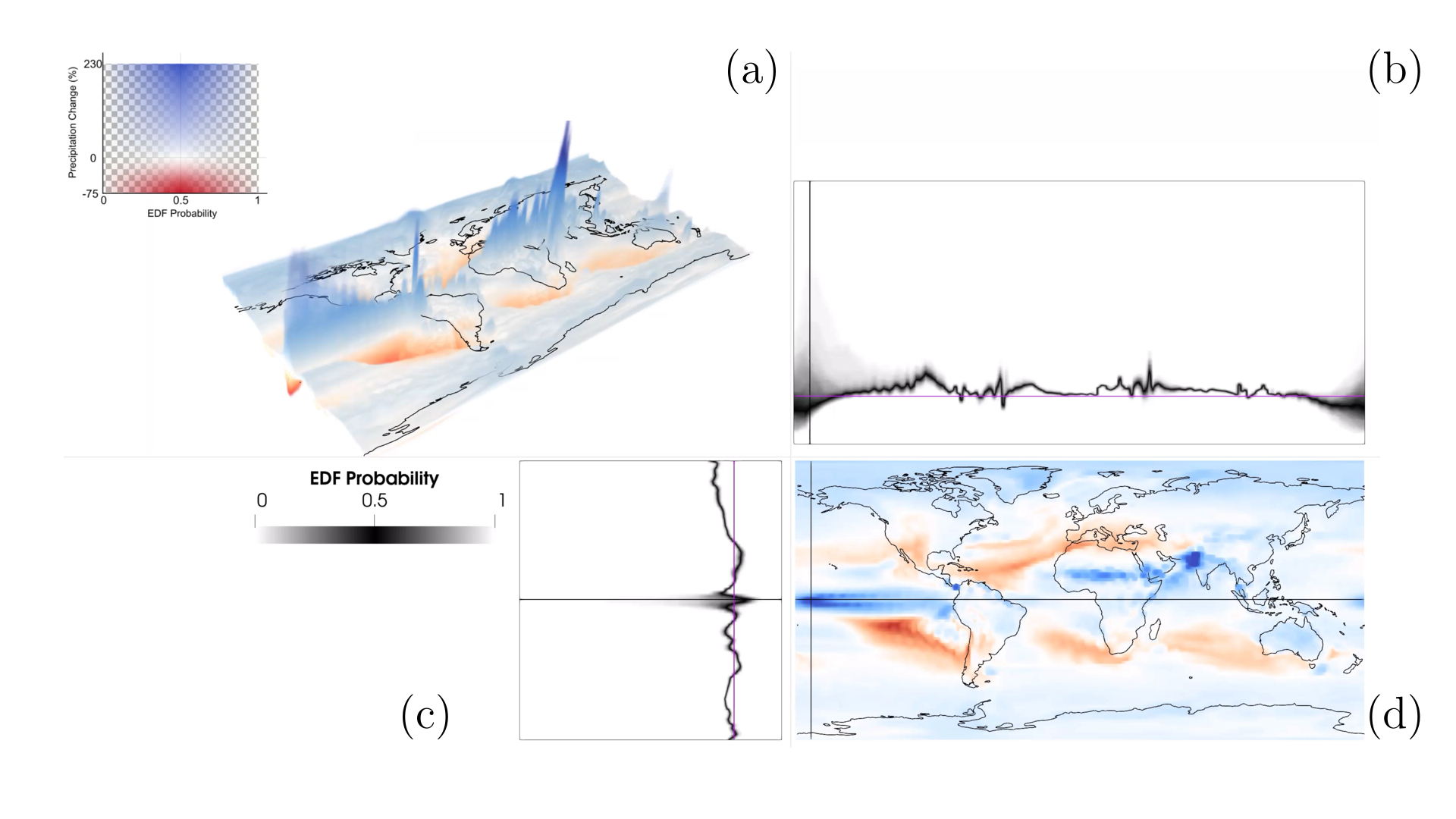Visualization of 2D Scalar Field Ensembles Using Volume Visualization of the Empirical Distribution Function
Tomas Daetz - Institute of Computer Science, Leipzig University, Leipzig, Germany
Michael Böttinger - German Climate Computing Center (DKRZ), Hamburg, Germany
Gerik Scheuermann - Leipzig University, Leipzig, Germany
Christian Heine - Leipzig University, Leipzig, Germany
Room: Bayshore VI
2024-10-16T16:36:00ZGMT-0600Change your timezone on the schedule page
2024-10-16T16:36:00Z

Fast forward
Full Video
Keywords
Scalar field visualization, ensemble visualization, volume rendering, nonparametric statistics.
Abstract
Analyzing uncertainty in spatial data is a vital task in many domains, as for example with climate and weather simulation ensembles. Although many methods support the analysis of uncertain 2D data, such as uncertain isocontours or overlaying of statistical information on plots of the actual data, it is still a challenge to get a more detailed overview of 2D data together with its statistical properties. We present cumulative height fields, a visualization method for 2D scalar field ensembles using the marginal empirical distribution function and show preliminary results using volume rendering and slicing for the Max Planck Institute Grand Ensemble.